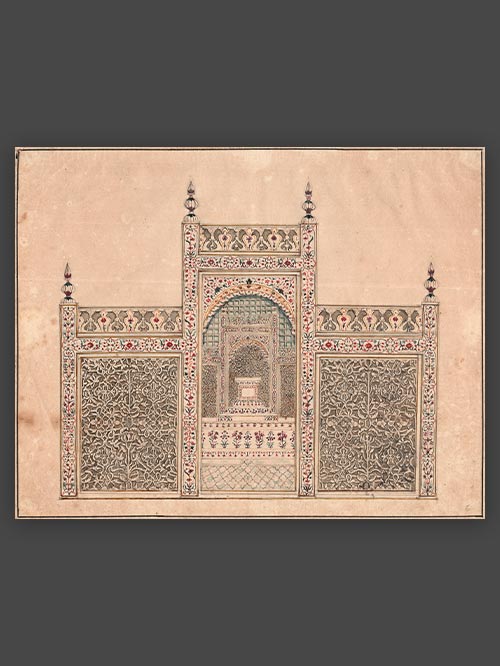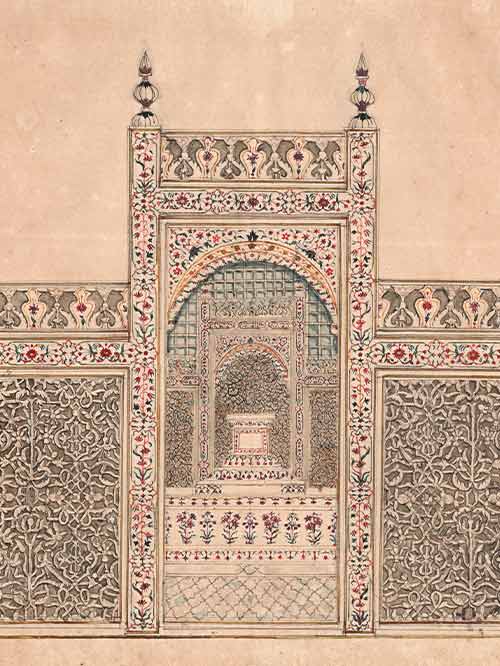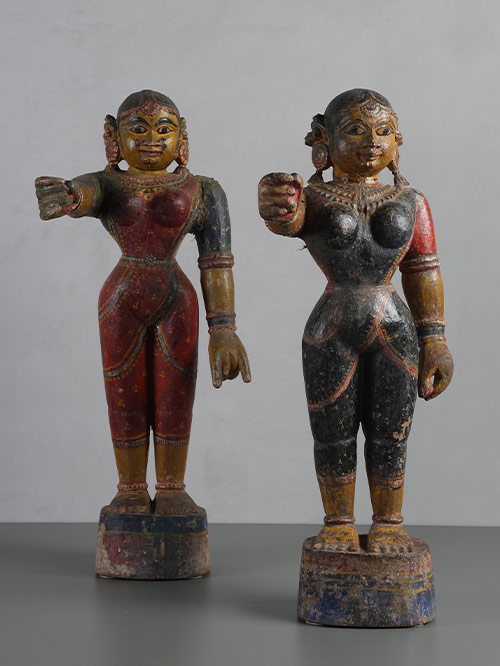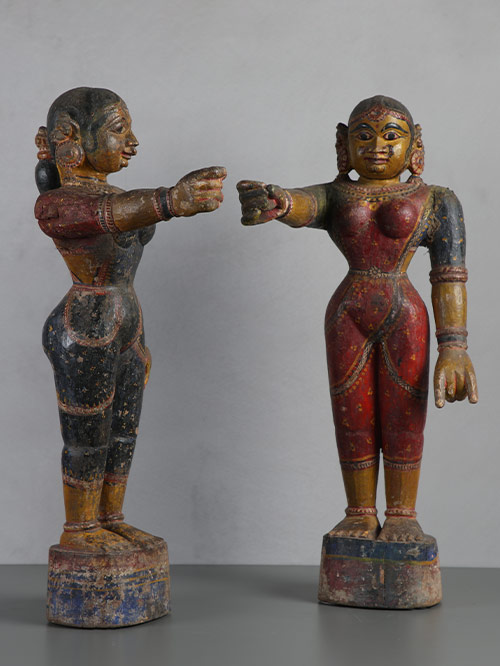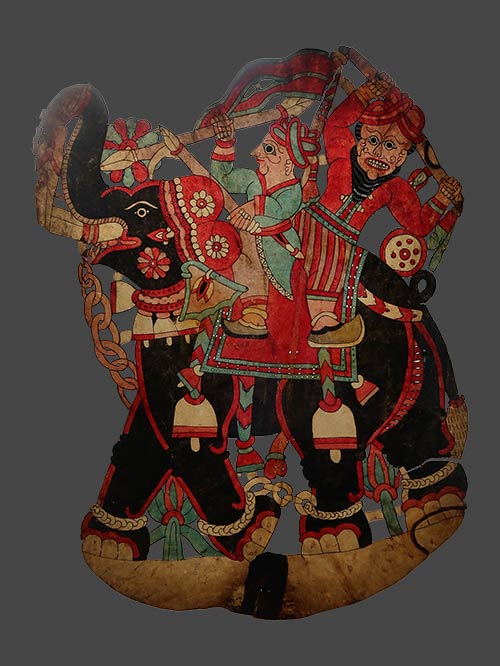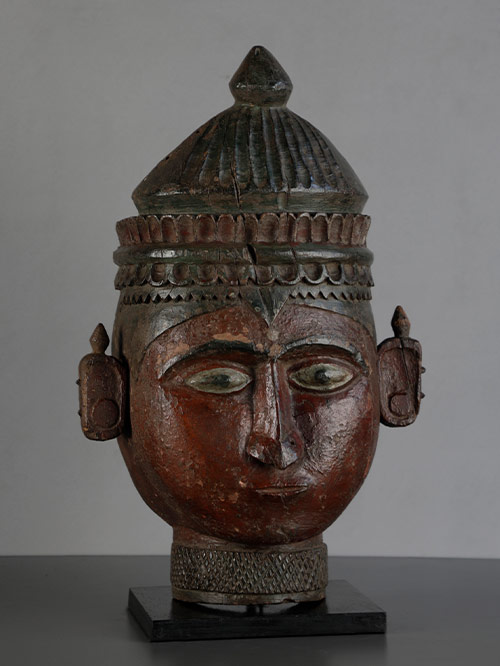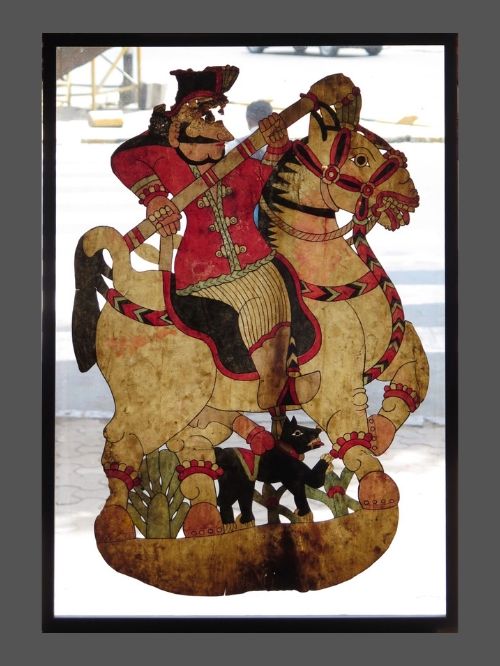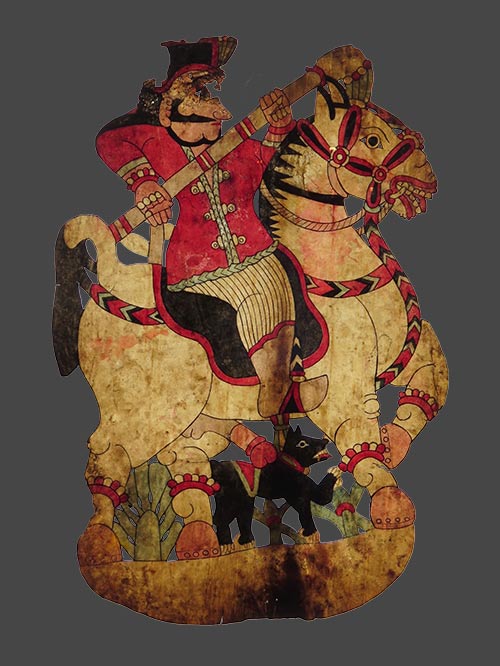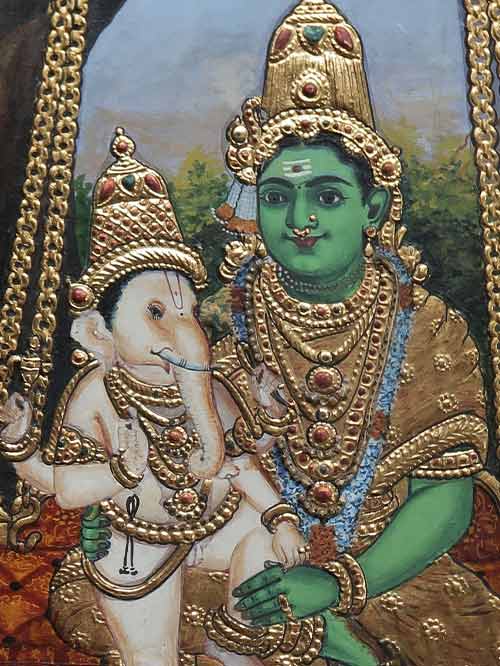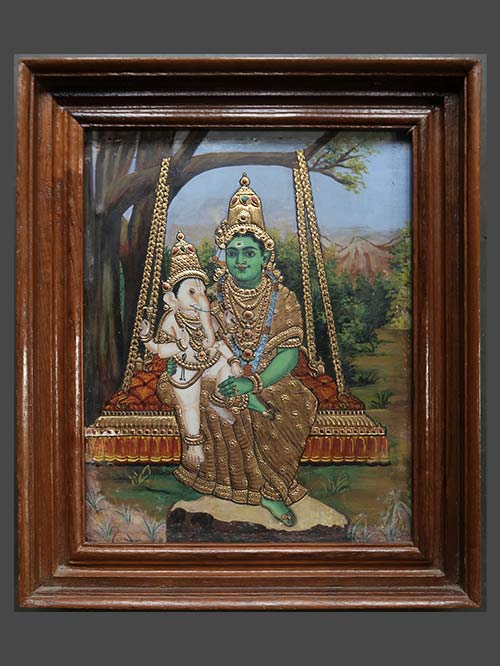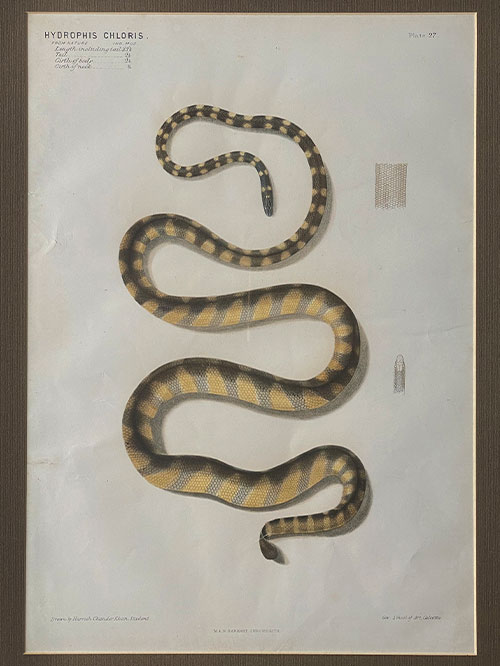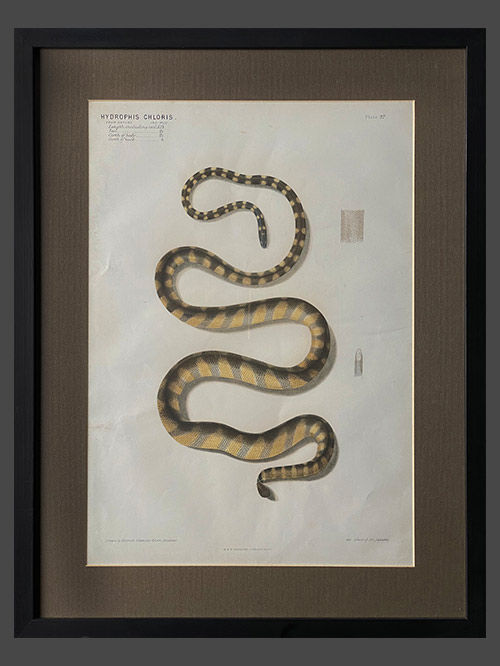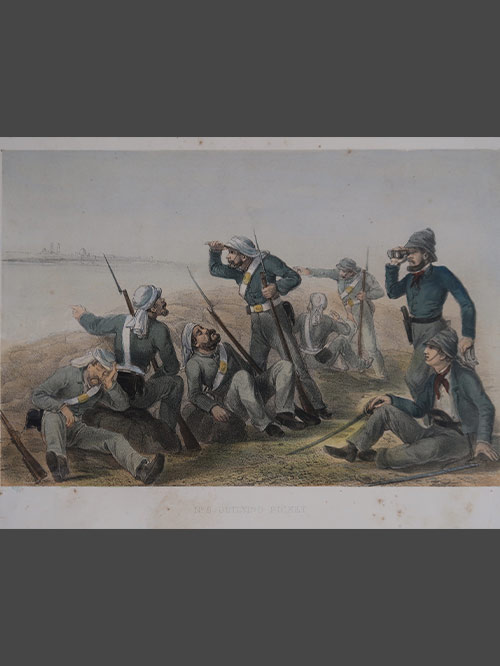Delhi or Agra artist (Company School)
Watercolour on paper
This enchanting view captures the south façade of the eight-sided screen surrounding the two cenotaphs. This particular façade houses the sole entrance portal into the innermost part of the Taj complex. You can glimpse the south elevation of Mumtaz Mahal’s cenotaph through this portal. Originally, it was intended to be closed by a door made of agate. A matching portal, taller than the flanking panels on the north façade, is enclosed by a jali. The remaining six sides each feature three marble carved jalis of equal height, supported by posts adorned with finials. Above, there’s a continuous pierced frieze of vases. All the marble, with the exception of the jali panels, is inlaid with semi-precious stones in floral motifs. The octagonal marble screen was installed in 1643, replacing the one made of pure gold inlaid with jewels, which had been in place since 1633, during the second ‘urs ceremony marking the anniversary of her death.
Artists trained in the Mughal tradition were compelled to seek for patronage outside the imperial atelier after the capture of Delhi and Agra by the East Indian Company in 1803. Portraiture from this period still expressed imperial preoccupations but started leaning towards a more naturalistic representation. Indian artists also quickly learned to apply their skills to a very different European art form, that of the objective architectural elevation. The result miraculously combines many of the best qualities of both traditions: the almost fanatical Mughal attention to fine detail is fused with a scientific European rationalism to produce an architectural painting that both observes and feels the qualities of a building.
Painting Size (cms): 19.2(H) x 24.2(W)
Painting Size (inches): 7.5(H) x 9.5(W)

